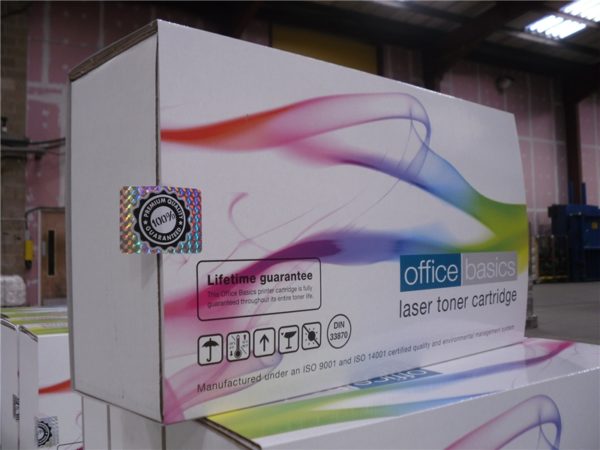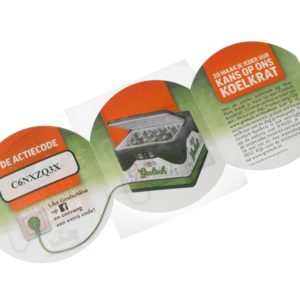Label Application and Overlabelling
Home / Full Product Range / Full Product Range / Label Application and Overlabelling
Label Application and Over Labelling FAQs
Over labelling, also known as relabelling, is the process of applying a new label over the existing one on a product. This is often done to update information, correct errors, or adapt a product for a different market.
Regulatory Overlabels: These are used to comply with local regulations and laws. For example, if a product is being sold in a different country, an overlabel may be used to provide information in the local language or to comply with local labelling requirements.
Correction Overlabels: If there’s an error or omission on the original label, a correction overlabel can be used to provide the correct information without having to reprint the entire label. This can be a cost-effective solution for correcting mistakes.
Promotional Overlabels: These are used to highlight promotions, special offers, or new features. For example, an overlabel might be used to highlight a “Buy One Get One Free” offer or to announce that a product has won an award.
Instructional Overlabels: These provide additional instructions or information about how to use the product. For example, an overlabel might be used to provide additional safety warnings or usage instructions.
Translation Overlabels: These are used to provide translations of the information on the original label. This is often necessary when selling a product in a country where a different language is spoken.
Recall Overlabels: In some cases, overlabels might be used to indicate that a product has been recalled, providing consumers with information about the recall and what they should do.
Barcode Overlabels: These are used to apply a barcode or QR code over the existing label. This can be useful for inventory management or for providing additional digital information.
Pharmaceuticals: Over labelling is often used to update dosage instructions, warnings, or to comply with local regulatory requirements. It’s also used when clinical trials are conducted in multiple countries and the information needs to be translated into different languages.
Food and Beverage: Over labelling is used to update nutritional information, ingredients, allergen warnings, or to translate information for different markets. It can also be used to apply promotional labels or to update pricing information.
Cosmetics: Similar to the food industry, over labelling in cosmetics can be used to update ingredient lists, usage instructions, or to comply with international regulations when products are sold in different countries.
Manufacturing: Over labelling can be used to update product specifications, safety information, or to apply barcodes and other tracking labels.
Retail: Over labelling is often used to apply promotional labels, update pricing information, or to apply security tags.
Electronics: Over labelling can be used to apply serial numbers, barcodes, or other tracking labels. It can also be used to update safety information or specifications.
Chemical Industry: Over labelling is used to update safety information, handling instructions, or to comply with international regulations for hazardous materials.
UKCA Marking: The UK government introduced legislation so that the UKCA marking can be placed on a label affixed to the product or on a document accompanying the product until 31 December 2025. The UK Conformity Assessed (UKCA) marking is a new UK product marking used for goods being placed on the market in Great Britain (England, Wales, and Scotland). It covers most goods that previously required the CE marking, known as ‘new approach’ goods. The UKCA marking came into effect on 1 January 2021
NHS pharmacy departments may undertake batch repackaging and overlabelling subject to certain restrictions. The limit for repackaging is a maximum batch size of 25 packs. The limit for overlabelling is a maximum batch size of 100 packs. There should be a limit of one batch per product per month prepared for stock
Labelservice offers an efficient and economical contract labelling service, using sophisticated own-designed labelling machines, for flat products e.g. pre-erected cartons, sleeves, envelopes, inserts and cards. We provide a fast turn-around with discretion and confidentiality assured. Our labellers are fitted with inspection equipment, giving you peace of mind that all completed products have been labelled correctly and within specification.
Corrections: Over-label any printing errors and save money. With high-accuracy placement and using labels with black-out permanent adhesive, no-one will ever know what lies beneath! Security Tagging: We have extensive experience applying all types of tags, elements and inlays; Acousto-Magnetic (AM), Electro-Magnetic (EM), Radio Frequency (RF), Radio Frequency Identification (RFID). All our labellers are equipped with anti-static removal, to ensure safe application.
Promotions: Rather than turn down work just because you don’t have the right labelling equipment, let us do it for you! This includes multi-panel, extended text and booklet labels.
New Legislation: Need to apply braille labels, holograms or warning symbols due to changes in packaging legislation? Instead of discarding old cartons or sleeves we can over-label your remaining stock and you get compliant quicker.
Label Application and Over Labelling FAQs
Over labelling, also known as relabelling, is the process of applying a new label over the existing one on a product. This is often done to update information, correct errors, or adapt a product for a different market.
Regulatory Overlabels: These are used to comply with local regulations and laws. For example, if a product is being sold in a different country, an overlabel may be used to provide information in the local language or to comply with local labelling requirements.
Correction Overlabels: If there’s an error or omission on the original label, a correction overlabel can be used to provide the correct information without having to reprint the entire label. This can be a cost-effective solution for correcting mistakes.
Promotional Overlabels: These are used to highlight promotions, special offers, or new features. For example, an overlabel might be used to highlight a “Buy One Get One Free” offer or to announce that a product has won an award.
Instructional Overlabels: These provide additional instructions or information about how to use the product. For example, an overlabel might be used to provide additional safety warnings or usage instructions.
Translation Overlabels: These are used to provide translations of the information on the original label. This is often necessary when selling a product in a country where a different language is spoken.
Recall Overlabels: In some cases, overlabels might be used to indicate that a product has been recalled, providing consumers with information about the recall and what they should do.
Barcode Overlabels: These are used to apply a barcode or QR code over the existing label. This can be useful for inventory management or for providing additional digital information.
Pharmaceuticals: Over labelling is often used to update dosage instructions, warnings, or to comply with local regulatory requirements. It’s also used when clinical trials are conducted in multiple countries and the information needs to be translated into different languages.
Food and Beverage: Over labelling is used to update nutritional information, ingredients, allergen warnings, or to translate information for different markets. It can also be used to apply promotional labels or to update pricing information.
Cosmetics: Similar to the food industry, over labelling in cosmetics can be used to update ingredient lists, usage instructions, or to comply with international regulations when products are sold in different countries.
Manufacturing: Over labelling can be used to update product specifications, safety information, or to apply barcodes and other tracking labels.
Retail: Over labelling is often used to apply promotional labels, update pricing information, or to apply security tags.
Electronics: Over labelling can be used to apply serial numbers, barcodes, or other tracking labels. It can also be used to update safety information or specifications.
Chemical Industry: Over labelling is used to update safety information, handling instructions, or to comply with international regulations for hazardous materials.
UKCA Marking: The UK government introduced legislation so that the UKCA marking can be placed on a label affixed to the product or on a document accompanying the product until 31 December 2025. The UK Conformity Assessed (UKCA) marking is a new UK product marking used for goods being placed on the market in Great Britain (England, Wales, and Scotland). It covers most goods that previously required the CE marking, known as ‘new approach’ goods. The UKCA marking came into effect on 1 January 2021
NHS pharmacy departments may undertake batch repackaging and overlabelling subject to certain restrictions. The limit for repackaging is a maximum batch size of 25 packs. The limit for overlabelling is a maximum batch size of 100 packs. There should be a limit of one batch per product per month prepared for stock
Labelservice offers an efficient and economical contract labelling service, using sophisticated own-designed labelling machines, for flat products e.g. pre-erected cartons, sleeves, envelopes, inserts and cards. We provide a fast turn-around with discretion and confidentiality assured. Our labellers are fitted with inspection equipment, giving you peace of mind that all completed products have been labelled correctly and within specification.
Corrections: Over-label any printing errors and save money. With high-accuracy placement and using labels with black-out permanent adhesive, no-one will ever know what lies beneath! Security Tagging: We have extensive experience applying all types of tags, elements and inlays; Acousto-Magnetic (AM), Electro-Magnetic (EM), Radio Frequency (RF), Radio Frequency Identification (RFID). All our labellers are equipped with anti-static removal, to ensure safe application.
Promotions: Rather than turn down work just because you don’t have the right labelling equipment, let us do it for you! This includes multi-panel, extended text and booklet labels.
New Legislation: Need to apply braille labels, holograms or warning symbols due to changes in packaging legislation? Instead of discarding old cartons or sleeves we can over-label your remaining stock and you get compliant quicker.





















